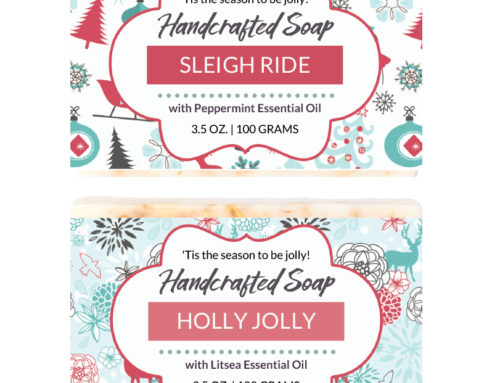I’ve seen quite a few brand-related mistakes that soap and skin care entrepreneurs make, like not creating a strong set of ad campaigns or not having a foundational set of products that are always available, but the biggest mistake I see is not having a brand identity. And unfortunately, I see this all the time.
Many artisan start-ups engage in what I call hope marketing, where you make a great product and then hope it sells. There is definitely a ceiling to this type of business plan. You will be “capped” on how much you can make and sell, even with a loyal customer base. You garner more customers through brand identity.
I know you’ve heard the term branding by now. Everyone has. It is almost getting to be a roll-your-eyes cliche. But think about it…there is a reason you are constantly hearing the term branding, and the need for a brand identity.
Imagine someone going to a job interview. Based on the job, they will probably dress a certain way, highlight their key experiences and most likely even modulate their voice to be different than it would be in casual conversation. Essentially, they kinda create a persona that they hope will be favorable to their employ-ability. In this same way, your brand is the persona of a company, and it will be your customer’s first impression.
Your products don’t matter as much as you might think
Product-centrism may have worked in times past, but now, in our rapid-fire digital age, you’ve got about 20 seconds to make your impression, whether you’re selling online or in person. Alas, 20 seconds just isn’t long enough for the handcrafted, artisan-glory of your product to shine through (especially if your packaging and product photography is bad). What will keep your potential buyers with you long enough to convert to a sale is the impression, or perception, you cultivate. Your brand. It won’t matter how good your product is if your brand doesn’t excite people. They will simply go elsewhere, and do so quickly.
 Want more from Benjamin? Check out his books on Amazon.com!
Want more from Benjamin? Check out his books on Amazon.com!
Cohesion is key
Sure, you should think long and hard about what a customer wants to see and experience. That’s key. But it’s also key to think about who you are as a business, and to let that dictate your branding and marketing.
For example, if you wish to engage people by showcasing simplicity and modernity, you probably wouldn’t want all of your copy in an old-school serif font. It might make more sense for your marketing material pomp and website copy to be in something sleeker like Helvetica or Lato. These may seem insignificant, but each informs the consumer’s sense of who you are and what you deliver. Branding is about cohesion. Cohesion creates a favorable, authentic relationship between your business and your customers, and buys you invaluable time for that relationship to gel before your client clicks/walks away to a competitor.
The aesthetic imperative
In today’s world, your business begins and ends with your company’s visual components. The art (any and all graphics, including logo, plus product photography, etc.) and copy (basically every written word used to describe your company, products, foundation, mission, vision, etc.) is intrinsically tied to a cohesive, successful brand identity.
If your company is trying to promote luxury and opulence, yet you name it, “Betty’s super soaps,” and the logo is made by your 3rd cousin on your daddy’s side, people will not be the least bit interested in your products, even if they are absolutely amazing.
The above is obviously an extreme, silly example, but I would encourage you to put on your objective-glasses and examine all aspects of your company. What is it conveying to people? What is your company’s voice? What is it’s mission? Why is it here and who is it here for? After you answer all of these questions, look at the aesthetics to see if they match up. If they don’t make haste to upgrade them.
If it needs work, rebrand
You may have read this far and noticed some mistakes you’ve made in your own branding. Don’t worry. It’s perfectly okay to rebrand, particularly if you feel like you need to change your company’s perception in the eyes of potential consumers. Companies of all sizes, even big corporations, go through rebranding from time to time.
That said, you must have a north star before you start your branding (or rebranding) quest. If you can’t describe to someone why your company matters and how it is serving (it isn’t serving everyone) in 60 seconds or less, you shouldn’t even begin thinking about fonts and color palettes.
Every single component of your business should be conducted under a foundational message that is yours (and/or your team) to come up with.
You are truly unique in an infinite amount of ways. You were born into a situation and then literally created a life-story that is still carrying on as you breath and your heart pumps.
Use this infinite creativity and zest for life and create a business with a unique and compelling story. You get to do that.
~ Benjamin






Benjamin,
Excellent words. Thank you.
Sincerely, Nicole